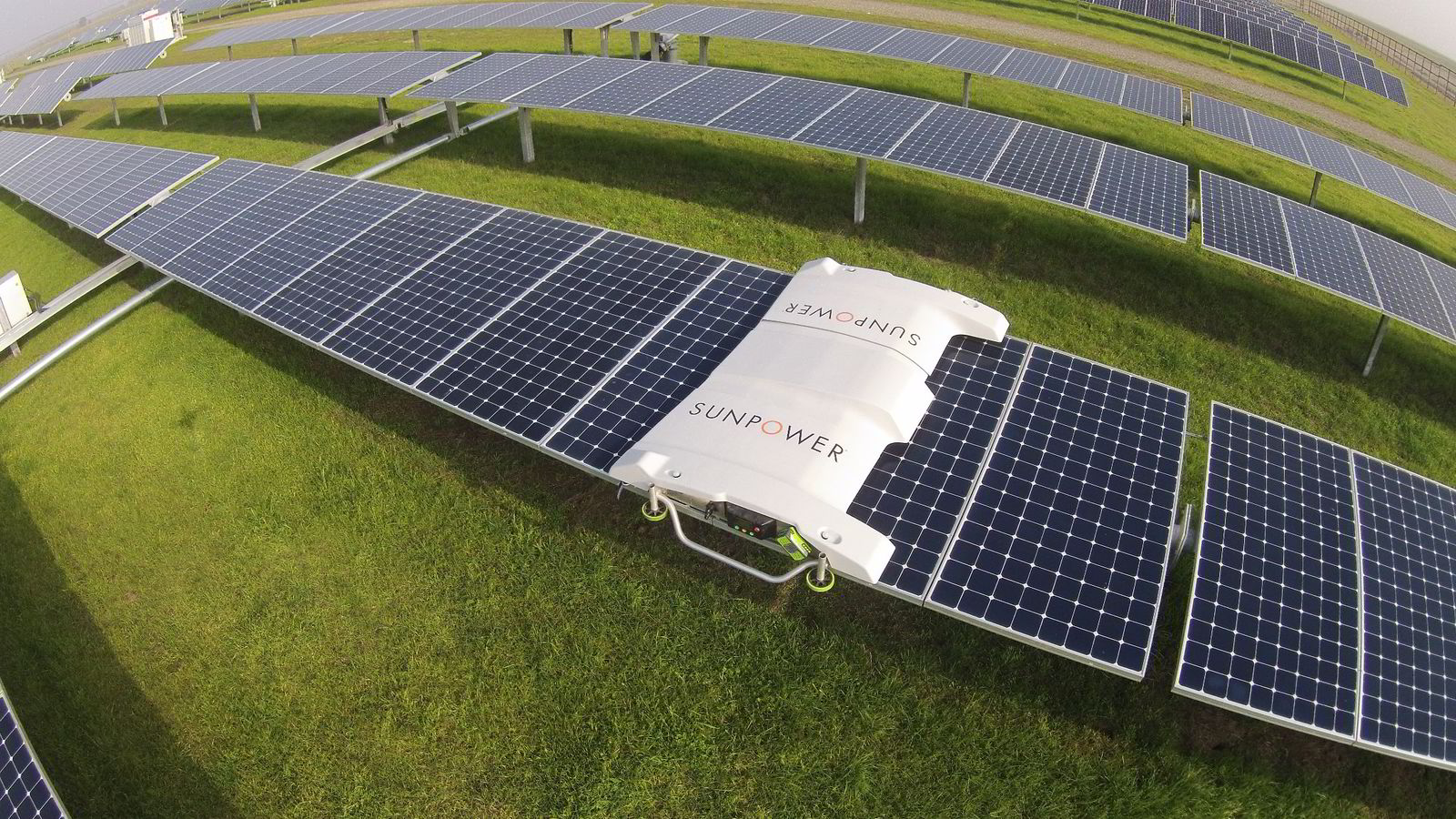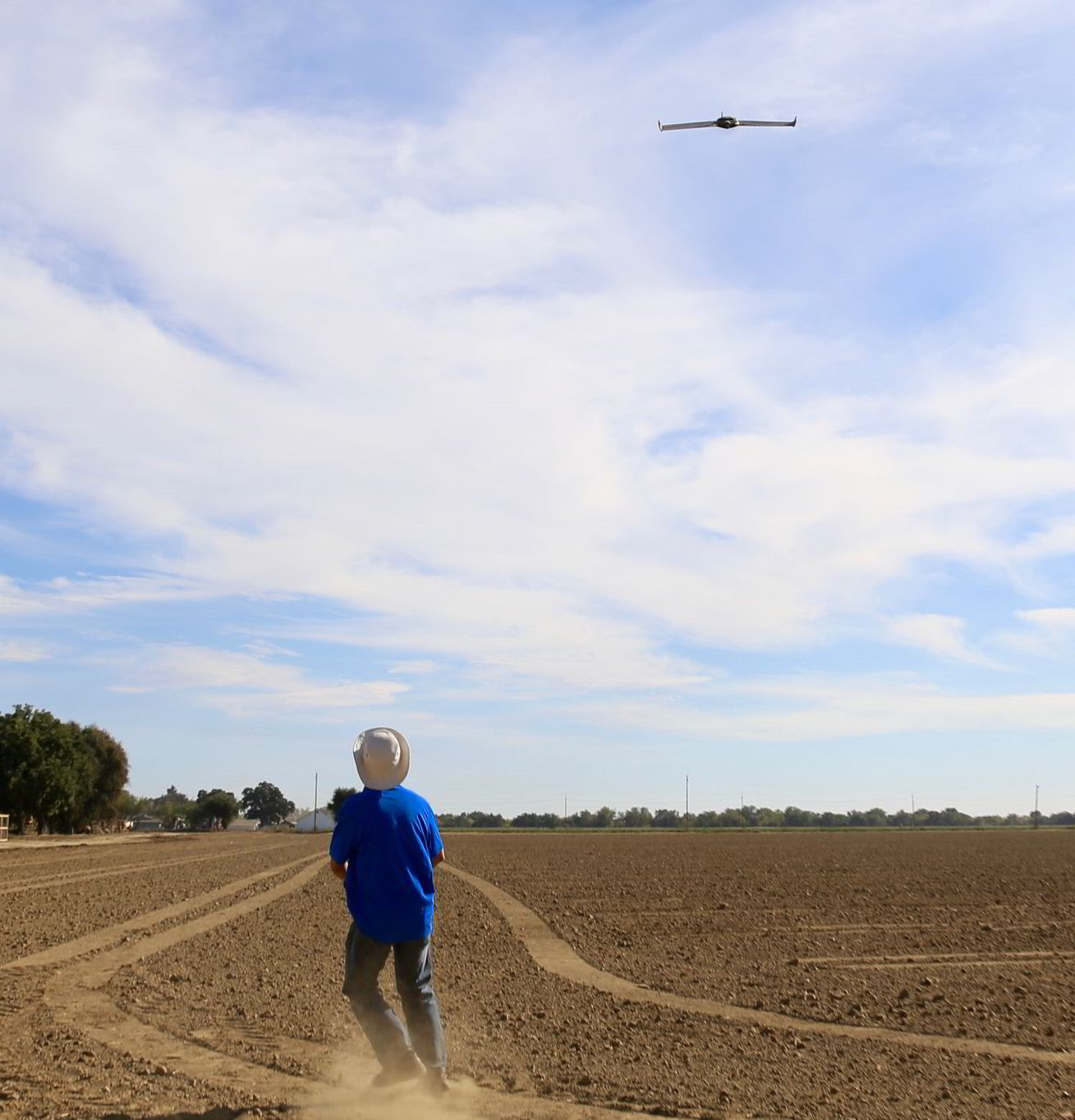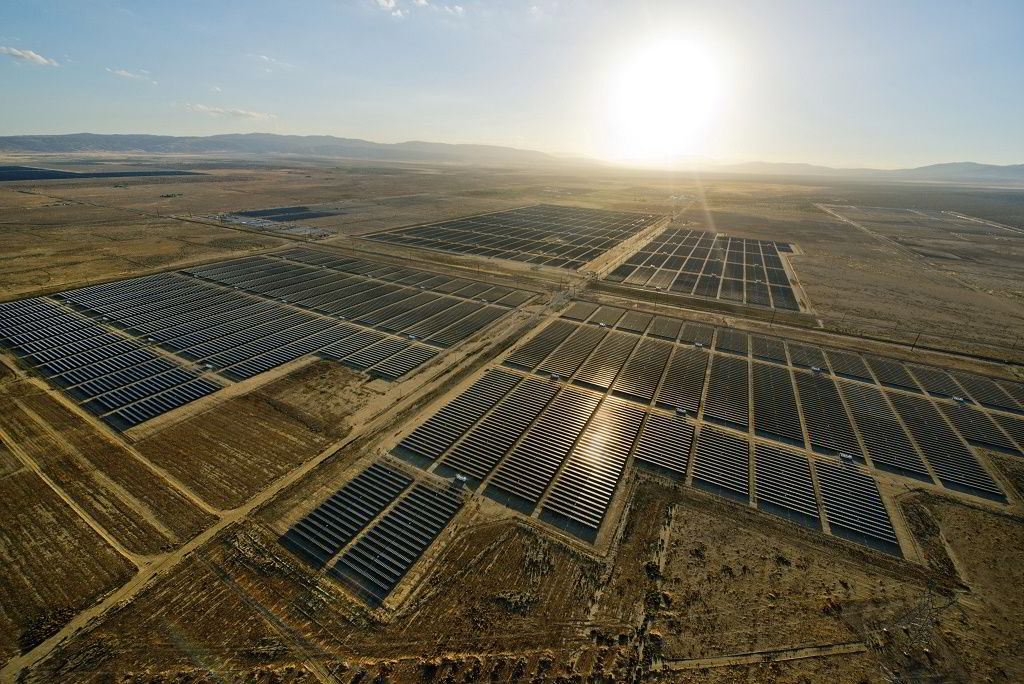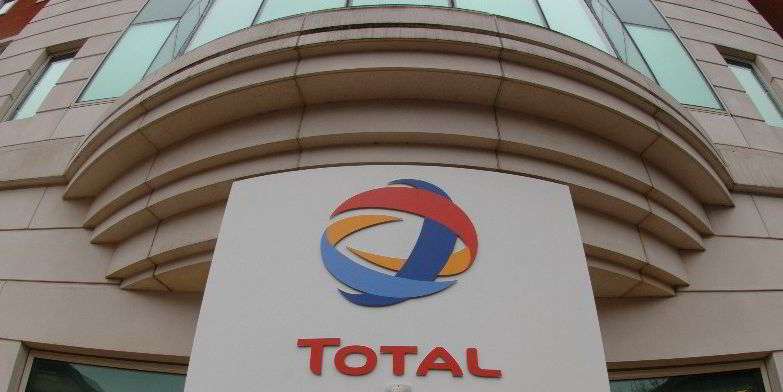SunPower is a pioneer in utility-scale solar, having built huge plants around the globe, including the world’s largest — the 576MW Solar Stars in California, now owned by Warren Buffett’s Berkshire Hathaway.
But competition in the large-scale solar market has become brutal, with new entrants pouring into the sector and global power-purchase-agreement (PPA) prices seemingly plumbing new lows every other week.
The fallout from the guidance revision was swift and serious: SunPower’s stock price plunged 30% the next day, its biggest one-day drop in seven years. Chief executive Tom Werner promptly lowered his annual salary to $1.
SunPower plans to “streamline” its power-plant division and divert investment to its healthier rooftop solar businesses. But company executives insist the realignment should not be interpreted as a retreat from utility-scale PV.
On the contrary, with the newly launched third generation of its Oasis power-plant system, Silicon Valley-based SunPower is getting ready for a future that many in the solar industry may not have dreamed of yet: a future in which drones and robots are integral to projects; ground-mounted solar and intensive agriculture co-exist; and large-scale PV dominates global power-generation additions.
SunPower no doubt has the luxury of being able to play a longer game than many other companies in its position could, given its majority ownership by Total, the French oil giant.
“As I look out five to ten years, I see us being one of the dominant global providers of total power-plant solutions globally — whether we do it through PPAs or by providing equipment to other companies,” says Ty Daul, senior vice-president for power plants in the Americas. “We see this as a profitable business for SunPower over the long run.”
Eye in the sky
In response to the challenging market conditions, SunPower is taking a two-pronged approach to utility-scale solar.
It will continue developing and building its own projects, albeit in a much smaller number of markets. At the same time it will begin selling its plug-and-play Oasis power-plant packages to other developers and EPC contractors — effectively a new line of business for the company.
Oasis integrates all the hardware that goes into a large-scale solar plant, from panels to trackers, as well as the software that runs it, into easily built modular power blocks of 2.5MW.
The offering is largely unique in the solar market, with most EPC contractors still choosing to put projects together on an à la carte basis, explains Matt Campbell, SunPower’s vice-president for power-plant products.
“We think there’s real value in an integrated solution,” he tells Recharge.
SunPower launched Oasis in 2010 to help cope with the logistics of its own projects as they began getting dramatically larger.
We tried to think about it this way: If the world is going to get to 40% solar, what do we need to do differently?
Matt Campbell, SunPower
The third generation of Oasis, unveiled in September, is a leap forward compared to previous versions.
SunPower “kind of took a clean sheet” when designing the new system, Campbell says, spending considerable time imagining the needs of a future industry in a world where centralised solar is a much larger part of the global electricity system.
Among the new version’s many distinctive features is its heavy use of drones throughout a project’s lifecycle, starting with early-stage development.
The process most developers use today to evaluate potential sites and design power plants looks quite similar to a decade ago, Campbell explains. Engineers go to a site and perform an “old-fashioned” survey of the land and its topography. If the site is chosen for a plant, the survey information is fed into a CAD (computer-aided design) system and the project is designed more or less manually.
“We tried to think about it this way: If the world is going to get to 40% solar, what do we need to do differently?” Campbell says. “The first thing that came to mind was, ‘We’ve got to automate the front-end process’. Because what we’re doing today just isn’t scaleable.”
With the latest Oasis, drones are flown over a site to create a photo mosaic and collect topographical information. That data is fed into SunPower’s proprietary cloud-based Global Energy Optimizer (GEO) software, which can instantly make a variety of calculations about a site — including estimated energy yield, cost of construction and basic project internal rates of return (IRRs).
Once a site has been selected, the software spits out dozens of possible project designs, allowing developers to maximise what’s most important to them — from squeezing the most megawatts onto a plot of land to getting the highest investment returns.
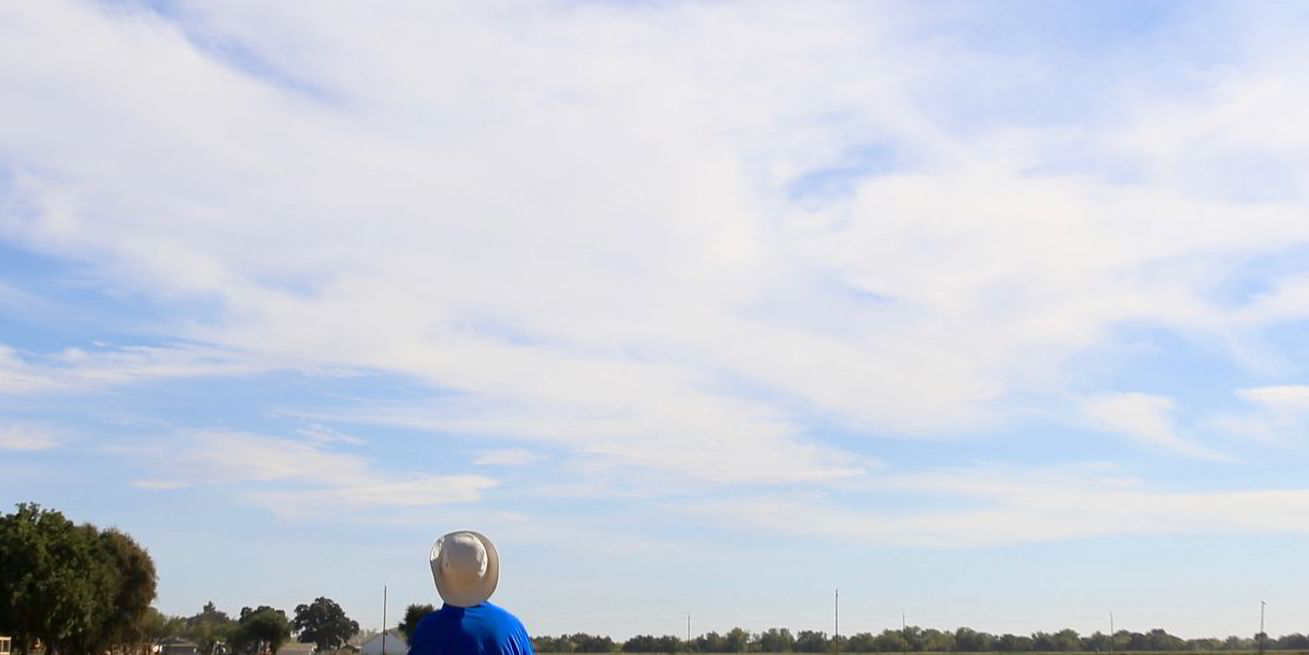
The drones and software platform can then be used through the build phase, keeping an eye on construction progress and component inventories — a kind of factory-management system in the sky.
“If you have a project in the middle of the desert, you don’t want expensive project managers sitting in trailers on a per diem,” Campbell says. “You’d rather have them in a centralised location using remote management tools, sort of like video conferencing.”
Drones can also be useful during a project’s operational phase, for example by monitoring which sections of panels require cleaning.
Once a group of modules is dirty enough, SunPower’s panel-cleaning robots — acquired through its 2013 purchase of Greenbotics — can be deployed to get them gleaming again.
Using the robots, three people will be able to clean 10MW of panels — 50km long if laid side by side — in ten hours, SunPower claims. That’s more than ten times faster than if those same people cleaned them manually, and the robots use 75% less water.
There are myriad hardware advances in the latest Oasis generation too.
Thanks to the design of the tracking motor-drive system, for example, plants can now be built in hilly areas with slopes of up to 10 degrees. That will give Oasis an advantage as land use becomes a bigger issue in many countries.
“In China, for instance, flat land is largely reserved for agriculture, and land-planning officials prefer to see solar on the sides of hills or even mountains,” Campbell says.
Everything’s been focused on making the panels cheaper. But in the future, software is going to be just as important as hardware
Matt Campbell, SunPower
Yet he concedes that as the solar industry matures, hardware breakthroughs become more difficult to achieve, even in a system as complex as Oasis. Rather than individual breakthroughs, the game becomes more about making dozens or hundreds of small improvements, which together have a meaningful impact on the levelised cost of energy.
“Everything’s been focused on making the panels cheaper,” he says. “But in the future, software is going to be just as important as hardware.
“It’s like mobile phones. There was a period when all the innovation was in hardware, and now a lot of the focus has shifted to software. We’re going to see the same thing in PV.”
Back on the ground
The second leg of SunPower’s utility-scale strategy is to continue developing and building projects in-house, but in a much smaller number of markets.
Its streamlining initiative will see SunPower pull back from many countries where it’s been active downstream in the past — including China, the Middle East and Africa.
A slower-than-expected take-off of some emerging solar markets, such as the Middle East, played a part in the decision, Daul acknowledges. “It’s a little bit of that, yes.”
More than that, though, is the realisation that in an ever-broadening and fiercely competitive global solar market, it’s difficult to develop projects profitably in so many places at once.
For the time being, SunPower’s downstream efforts will focus largely on the US, Mexico and Chile — places the company has a “stable base of business” today, Daul says.
The US is an obvious choice, despite the fact that market delays caused by the multi-year extension of the solar investment tax credit (ITC) are responsible for many of SunPower’s immediate financial problems.
“The long-term growth opportunities in the US are phenomenal,” Daul says, pointing to important market drivers such as the strengthening renewables mandates in states like California, growing demand for green energy from corporations, and the incoming Clean Power Plan.
8point3 Energy Partners, a yieldco owned jointly by SunPower and First Solar, will probably buy many of SunPower’s completed US projects.
Meanwhile, SunPower emerged as one of the biggest winners in Mexico’s first renewables tender earlier this year, securing PPAs to build 500MW.
Solar will “predominate” in future Mexican tenders, predicts Daul, who is also a veteran of the wind business through previous roles at companies like Iberdrola Renewables. SunPower intends to continue bidding for projects in the country.
The next few years will be difficult for large-scale solar developers around the world, and SunPower is no exception.
Depressed commodity prices have helped push PPAs to unthinkable lows in many places. Aggressive developers, many of them relative newcomers, are bidding prices down even further, betting on continued cost declines for PV components.
But SunPower is in a better position than most to weather the storm. There is its thriving rooftop business, and then there’s Total.
Total commitment
With BP having abandoned its solar division earlier this decade, Total’s investment in SunPower is now inarguably the most important investment by a global oil giant in the PV industry.
Total has not yet unlocked any massive solar deals for SunPower in difficult markets such as the Middle East, nor announced any game-changing moves to elevate SunPower’s position within its 92-year-old energy empire. But by all accounts, the world’s fourth-largest public oil company has been a patient and long-sighted owner since buying its majority stake in SunPower in 2011.
“Consolidating its leadership in solar energy” is now one of Total’s four strategic priorities, and the plot thickened last spring when Total uncorked a $1.1bn deal to buy French battery maker Saft.
Chile appears to be the place where SunPower and Total are working together most closely, offering a glimpse into how their relationship could look in the future. The two companies recently won a competitive tender in Chile for a 164MW solar project, and secured another PPA for a 100MW plant that will provide most of the electricity needed to power Santiago’s metro system.
Their precise working relationship will change over time, and look different in different markets, Daul says. In some cases, Total may buy SunPower projects; in others, it may buy SunPower equipment, including Oasis systems.
The important thing, Daul says, is “Total’s a long-term player”.
“That’s a great thing to have in a partner and part-owner when you have a long-term vision.”
